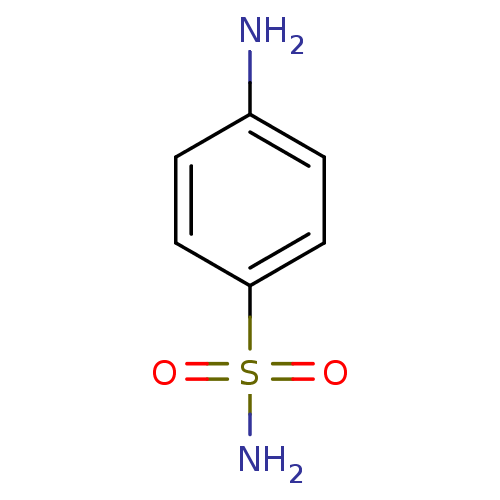 Found 5 Enz. Inhib. hit(s) with Target = 'Carbonic anhydrase 5A, mitochondrial' and Ligand = 'BDBM10857'
Found 5 Enz. Inhib. hit(s) with Target = 'Carbonic anhydrase 5A, mitochondrial' and Ligand = 'BDBM10857' Affinity DataKi: 1.36E+3nMAssay Description:An Applied Photophysics stopped-flow instrument has been used for assaying the CA-catalyzed CO2 hydration activity. Phenol red has been used as indic...More data for this Ligand-Target Pair
Affinity DataKi: 3.20E+4nMAssay Description:An Applied Photophysics stopped-flow instrument has been used for assaying the CA-catalyzed CO2 hydration activity. Phenol red has been used as indic...More data for this Ligand-Target Pair
Affinity DataKi: 3.20E+4nMAssay Description:Inhibition of human mitochondrial CA5A preincubated for 15 mins by stopped-flow CO2 hydration methodMore data for this Ligand-Target Pair
Affinity DataKi: 3.20E+4nMAssay Description:Inhibition of human recombinant CA5A by stopped flow CO2 hydrase assayMore data for this Ligand-Target Pair
Affinity DataIC50: 3.20E+4nMAssay Description:Inhibitory concentration against human cystolic isozyme V of Carbonic anhydraseMore data for this Ligand-Target Pair
